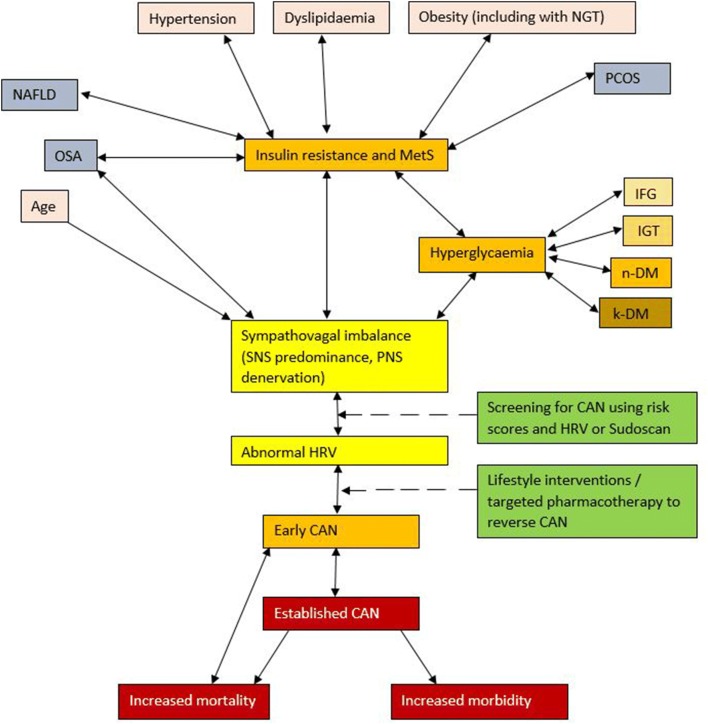Fig. 1.
The multifactorial aetiology of cardiac autonomic neuropathy (CAN). Multiple factors contribute to the development of CAN in pre-DM and MetS including age, obesity measured by BMI and WC, hypertension, dyslipidaemia and hyperglycaemia [2, 40]. Initially, sympathovagal imbalance develops with PNS denervation and SNS predominance [1, 9, 54]. Sympathovagal imbalance may result in insulin resistance and hyperinsulinaemia which drives further SNS activation in a vicious cycle [58]. This manifests as reduced HRV and early CAN [2]. Reduced HRV leads to a greater risk of developing MetS, CAN and the subsequent risk of cardiovascular mortality [2, 12, 13, 62, 152, 159]. PCOS and NAFLD are associated with MetS and contribute to the increasing population of CAN [88, 96]. OSA is associated with CAN via MetS and possibly an independent mechanism [82]. Screening for CAN at an early stage could allow lifestyle interventions and/or targeted pharmacotherapy to prevent or reverse CAN [13, 60]. CAN cardiac autonomic neuropathy, HRV heart rate variability, IFG impaired fasting glucose, IGT impaired glucose tolerance, k-DM known diabetes mellitus, MetS metabolic syndrome, NAFLD non-alcoholic fatty liver disease, NGT normal glucose tolerance, n-DM newly detected diabetes mellitus, OSA obstructive sleep apnoea, PNS parasympathetic nervous system, PCOS polycystic ovary syndrome, SNS sympathetic nervous system

